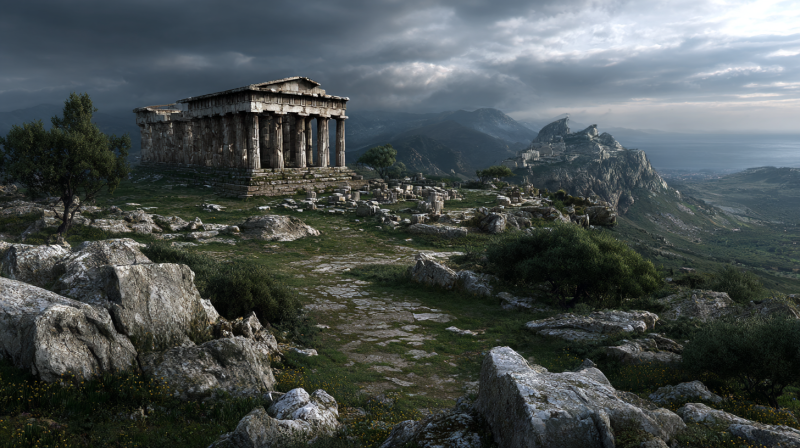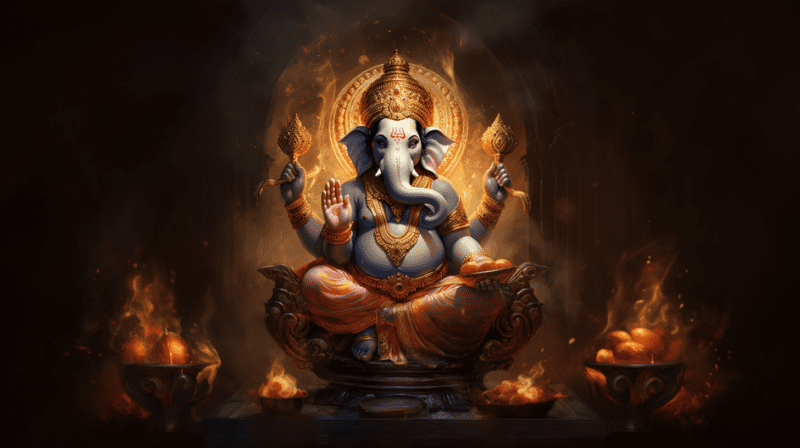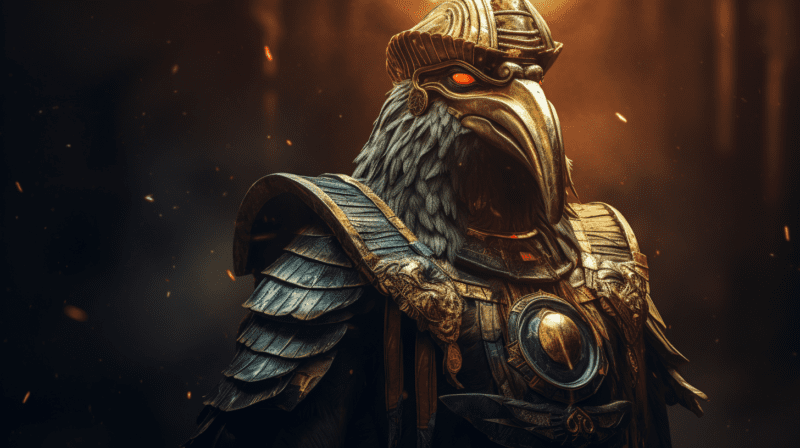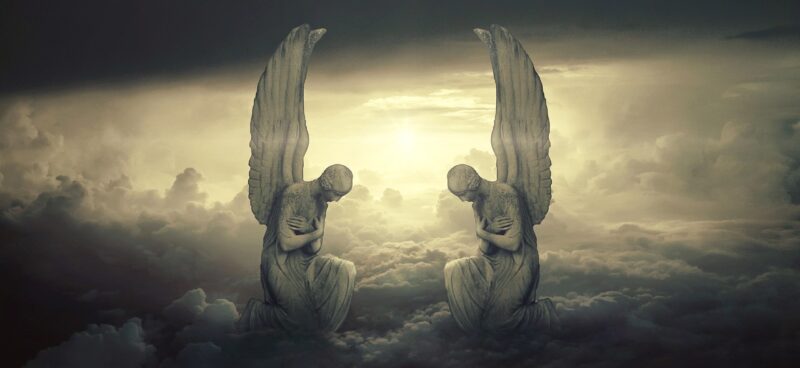The Creator God of Chinese Mythology
In the vast tapestry of Chinese mythology, few tales captivate the imagination as profoundly as that of Pangu, the primordial giant credited with the creation of the world. This narrative, rich in symbolism and philosophical depth, offers a window into ancient Chinese perceptions of the universe’s origins and the delicate balance between chaos and order.
The Birth of Pangu
Long before the heavens and earth took form, the universe existed as a formless, chaotic mass, often likened to a colossal cosmic egg. Within this swirling void lay the potential for all creation, and nestled deep inside was Pangu, the first living being. For eons, Pangu slumbered, gestating within the cosmic egg, until the forces of yin and yang reached a harmonious balance, prompting his awakening.
Upon awakening, Pangu found himself confined within the oppressive darkness of the egg. Desiring freedom and space, he wielded a mighty axe and struck with unparalleled force, shattering his cosmic shell. As the egg split, the lighter elements (yang) ascended to form the heavens, while the denser components (yin) descended to create the earth. To ensure that these nascent realms remained separate, Pangu positioned himself between them, standing as a living pillar.
The Labors of Pangu
Pangu’s task was far from complete. Each day, he diligently pushed the sky higher and pressed the earth deeper, growing in stature to maintain the separation. This monumental effort continued for 18,000 years, with Pangu expanding ten feet daily, symbolizing the universe’s continuous growth and the dynamic interplay of cosmic forces.
Throughout this period, Pangu’s physical form underwent significant transformations. His breath became the wind and clouds; his voice manifested as thunder. His left eye radiated as the sun, and his right eye gleamed as the moon. His limbs and torso gave rise to the four cardinal directions and the majestic mountains. His blood flowed into rivers, his muscles formed fertile lands, and his facial hair sprouted into the stars that adorn the night sky. Even the parasites on his skin evolved into animals, populating the newly formed world.
Symbolism and Philosophical Underpinnings
The tale of Pangu is more than a mere creation story; it encapsulates profound philosophical concepts central to Chinese thought. The initial chaos within the cosmic egg represents Hundun (混沌), a state of primordial disorder. Pangu’s emergence and subsequent actions illustrate the transition from chaos to cosmos, emphasizing the importance of balance and harmony.
The dual forces of yin and yang play a pivotal role in this narrative. Their separation and balance are essential for creation, reflecting the Taoist belief in the interdependence of opposites. Pangu himself embodies this balance, his very existence ensuring the stability of the universe.
Variations and Evolution of the Myth
While the core narrative remains consistent, various versions of the Pangu myth have emerged over time. Some accounts suggest that Pangu was assisted by four mythical creatures: the dragon, phoenix, qilin, and tortoise, each representing different elements and virtues. These beings aided him in shaping the world, adding layers of richness to the myth.
The origins of the Pangu story have been the subject of scholarly debate. The earliest recorded version appears in the “Sanwu Liji,” a 3rd-century text attributed to Xu Zheng. Some scholars propose that the myth may have roots in the traditions of southern China’s Miao or Yao peoples, while others draw parallels to creation myths from different cultures, highlighting universal themes in humanity’s quest to understand its beginnings.
Pangu in Cultural Context
Beyond its mythological significance, the story of Pangu has permeated various aspects of Chinese culture. It has inspired countless artistic representations, from intricate paintings to grand sculptures, each capturing different facets of the legend. Traditional songs, especially among the Zhuang people, continue to recount Pangu’s deeds, ensuring that the tale remains alive in collective memory.
Moreover, the Pangu myth has influenced Chinese cosmology and views on the natural world. The idea of the universe as a living entity, born from the body of a primordial being, underscores a deep reverence for nature and the interconnectedness of all things.
Conclusion
The legend of Pangu stands as a testament to the richness of Chinese mythology and its capacity to convey complex philosophical ideas through storytelling. It offers a profound reflection on creation, balance, and the eternal dance between chaos and order. As we delve into this ancient narrative, we gain insight not only into the origins of the world as envisioned by early Chinese thinkers but also into enduring values that continue to resonate today.
Citations
- “Pangu.” Wikipedia, https://en.wikipedia.org/wiki/Pangu.
- “Pan Gu.” Britannica, https://www.britannica.com/topic/Pan-Gu.
- “Pangu: The Giant Who Created the Earth.” Mythology Source, https://mythologysource.com/pangu-chinese-giant/.
- “Pangu: The Creator God of Chinese Mythology.” MythBank, https://mythbank.com/pangu/.
- “Pangu: Mythological Insights into the Chinese Creation Story.” Ancient Origins, https://www.ancient-origins.net/human-origins-folklore/pangu-chinese-creation-story-00347.





